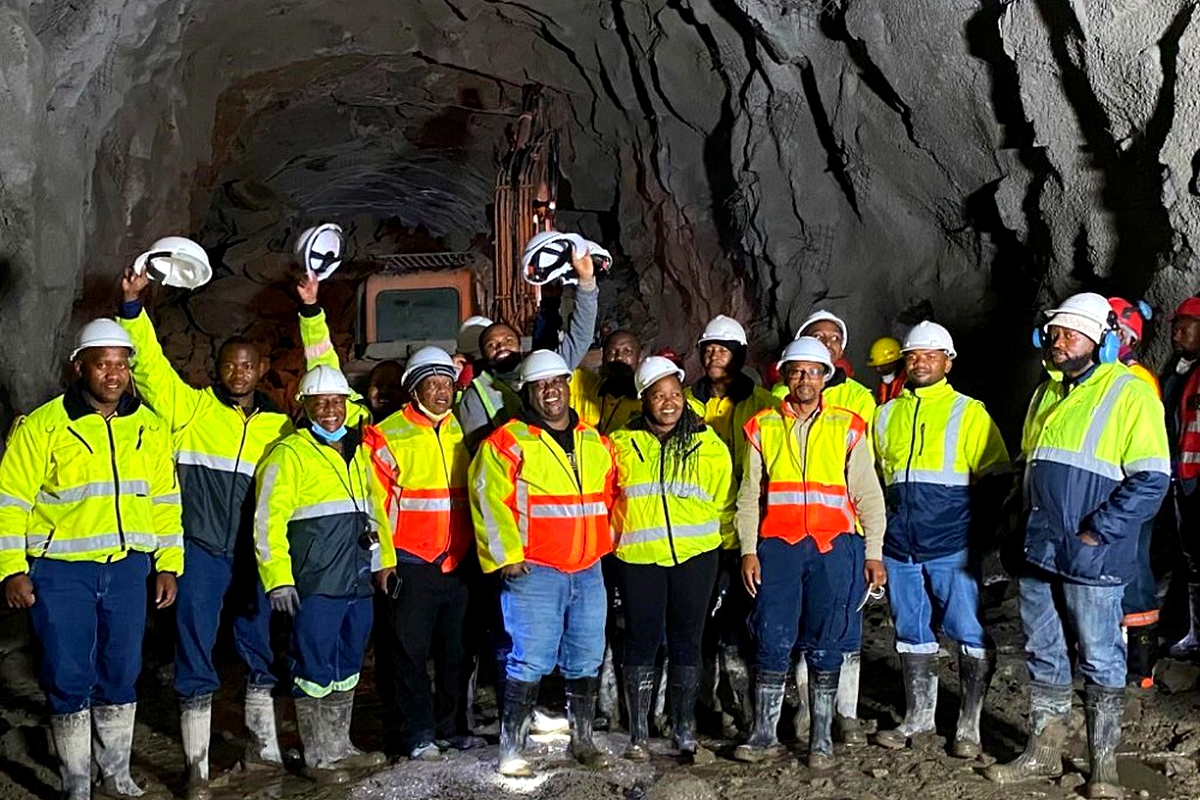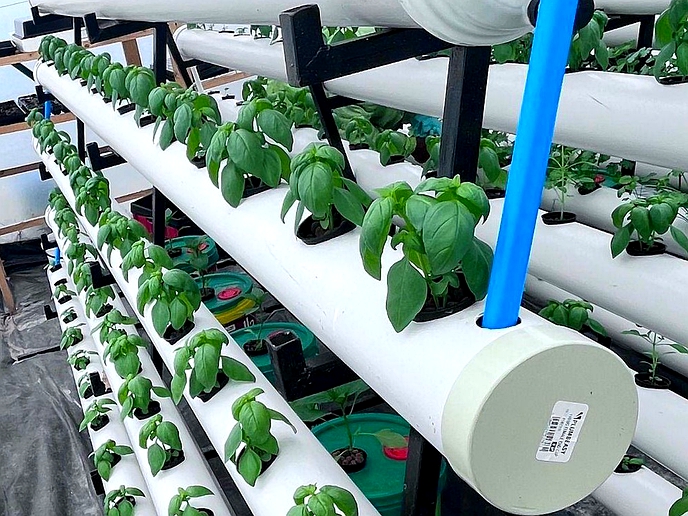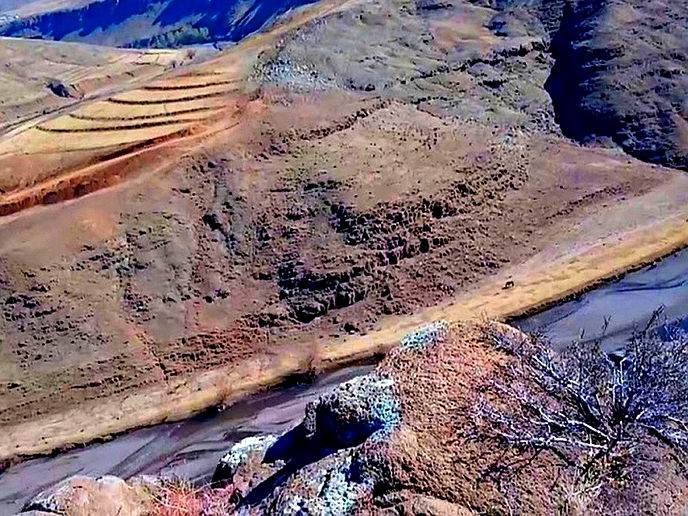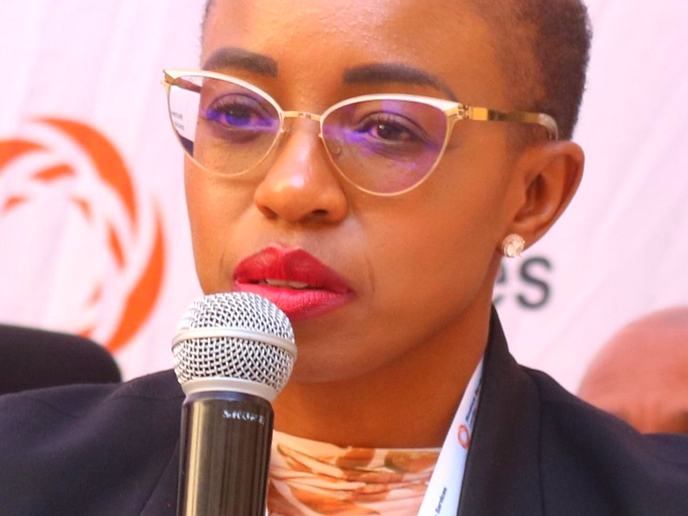AFTER 14 full months and numerous challenges brought about by among others, the COVID-19 pandemic, harsh weather conditions and flooding on the Senqu River since January, the Lesotho Highlands Development Authority (LHDA) has completed the construction of two diversion tunnels at its Polihali dam site.
business
Aug. 26, 2021
NEO SENOKO
4 min read
LHDA celebrates Polihali milestone

LHDA staff celebrate breakthrough of Polihali diversion tunnels
LHDA, construction workers and representatives of the supervising engineers and contractors on Monday celebrated a significant milestone in the construction of Phase II of the Lesotho Highlands Water Project (LHWP) with the double breakthrough of the two diversion tunnels on August 16.
The tunnels, one 7metres in diameter, the other 9metres in diameter and both almost a kilometer long, were excavated by both drill and blast method and achieved the breakthrough on the same day and at almost the same time.
“The breakthrough is a significant milestone for the team that has been tunneling on this project for the past 14 months. It celebrates progress achieved despite challenges such as the COVID-19 pandemic, harsh weather conditions, flooding on the Senqu River, which affected the construction site in January and other social challenges,” said the SCLC-JV contractor’s representative, Paolo Campanella.
The LHDA Phase II Contracts Manager, Thabo Hloele said the breakthrough marks the completion of 1 870 metres of the tunnel excavation and is a significant step in Phase II construction.
Excavation inside the two Polihali diversion tunnels commenced in June 2020 and mostly advanced from the outlets. Completed work on the contract includes excavation of the portals and the in-situ reinforced concrete lining of inside walls of the two tunnels for approximately 35 metres from the entrance of both tunnels.
Ongoing work includes finalisation of construction of the concrete intake structure on the 9 metre diameter tunnel.
Construction of the intake structure on the ancillary 7 metre diameter tunnel is almost complete. The remaining work, the LHDA says, includes invert concrete lining for the overall lengths in the tunnels and some minor surface work.
“We are proud of the double breakthrough we celebrated on Monday. It has been a long and challenging journey to get here but we made it, thanks to the expertise and dedication of many people. For some of us, this is one of the biggest milestones of our careers, while for the young professionals, the project has provided an invaluable experience in tunneling,” said the resident engineer, Ntsoeleng Mohale.
The breakthrough, he said is a long awaited event which marks the end of the critical stage of tunneling.
Mr Mohale is a product of the LHDA’s “on the job training” programme which jump started engineering careers for young professionals during the first phase of the Lesotho Highlands Water Project.
Understanding the value of his own experience underpins his passion for mentoring young engineers currently working on the diversion tunnels project under the LHWP Phase II Young Professionals Programme.
“We have seen these young engineers move from training to performance level and I am proud that they contributed immensely towards the breakthrough. The exposure and experience gained on this contract will increase their marketability in the job market,” he added.
The diversion tunnels will convey water that is diverted away from its natural path (the river) to ensure that during construction of the Polihali Dam, work can take place in a dry area, uninterrupted by the river flow.
The LHDA advanced the construction of these diversion tunnels to enable the dam contractor once appointed, to immediately focus on diverting the river through the tunnels instead of the traditional approach of incorporating the diversion tunnels work as part of the dam construction scope.
As a result, the dam contractor will also have earlier access to the river section than normal.
Enjoy our daily newsletter from today
Access exclusive newsletters, along with previews of new media releases.
The contractors, the SCLC-JV, who include South African Salini Impregilo S.p.A, Cooperatya Muratori Cementistri CMC di Ravenna (South African branch), Lesotho based LSP Construction (Pty) Ltd and South African CMI infrastructure Ltd are constructing the tunnels under the supervision of the Metso a Senqu-Khubelu Consultants Joint Venture (MSKC-JV) which also designed the diversion tunnels.
The supervising engineering company, MSKC also includes a number of South African and Lesotho based firms viz. Zutari (SA), Health Goba (SA), Knight Piesold (SA), SMEC (SA), and FM Associates (Lesotho), S5 Construction Consultants (Lesotho) and white Life Consultants (Lesotho).
Phase II of the Lesotho Highlands Water Project builds on the successful completion of Phase I in 2003. It delivers water to the Gauteng region in South Africa and utilises the water delivery system to generate electricity for Lesotho.
Phase II will increase the current water transfer rate of 780 million cubic metres per annum incrementally to more than 1 270 million cubic metres per annum.
At the same time, it will increase the quantity of electricity generated at the ’Muela Hydropower Station from approximately 500GWh to 800 GWh per year and is a further step in the process of securing an independent electricity source to meet Lesotho’s domestic requirements.
The hydropower further feasibility studies confirmed that conventional hydropower is the preferred option for the Phase II hydropower component and identified three potential sites.
Tailored for you






